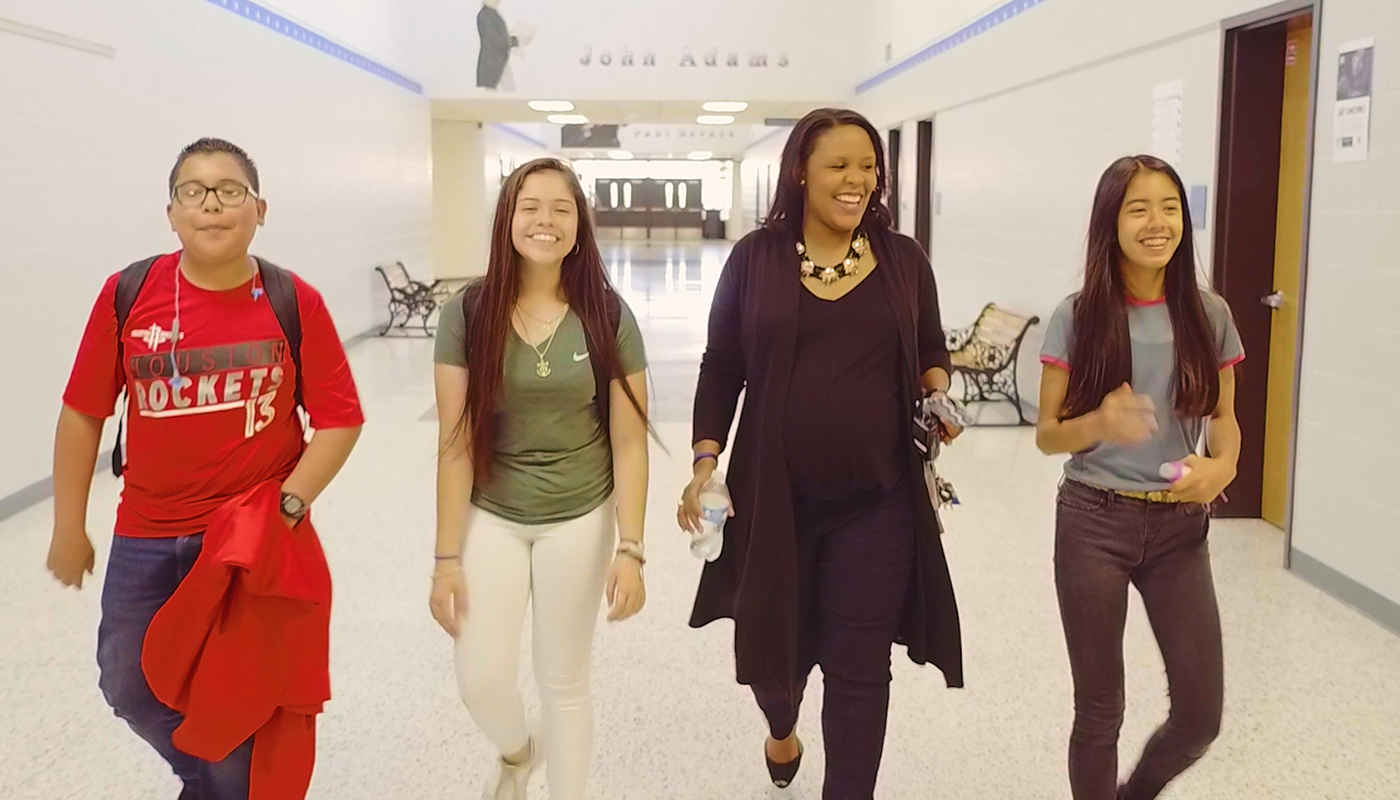
At Elmer G. Bondy Intermediate School in Pasadena, Texas, teachers are using and sharing data across grade-level teams to understand and teach the whole student.
While teachers had always considered data to be important before using the Summit Learning Program, 7th Grade Teacher Amanda Escamilla notes that teachers had a tendency to focus only on students in their own subject. Now, teachers are consistently leveraging data-driven instruction to better reach all students.
Amanda says that this capability has helped teams bring student learning to a whole new level: “We were able to make a priority list for those students and look at them across English and math and science and history, and then pinpoint where they were struggling.”
Watch the video above to learn more about Elmer G. Bondy Intermediate’s learning and teaching transformation through strategic and authentic use of student data.
Leveling Up Team Meetings Around Student Data
While grade-level teams at Elmer G. Bondy Intermediate had a history of strong collaboration, the meetings in which they looked at individual student data were not always successful; teachers faced the challenge of seeing past student data in their own content area. “We had a tendency to focus only our [students] in our own subject, instead of the [student] as a whole,” says Amanda.
But the ability to see student progress across all subjects in one place on the Summit Learning Platform, as well as new collaborations between students’ teachers and mentors, are helping grade-level teams connect the dots.
“It felt like we were an actual team, not just separate teachers.”
— Leslie Hermes, 8th Grade Teacher
And this teamwork has resulted in more confident teachers who feel better prepared to help differentiate learning for students.
Targeting Instruction to Meet Needs of All Students
At Elmer G. Bondy Intermediate, the tools and structure provided by the Summit Learning Program are empowering teachers to provide more targeted instruction to meet the needs of all learners. “We really took ownership of creating success for our students, and [helping set] goals that they could reach that were attainable to them, because [students] had access to people who were willing to help them every class period,” says Leslie.
If a grade-level team notices that a particular student needs additional 1:1 tutoring in math rather than history, for example, they can plan to spend more time with that student in a particular content area over a set period of time, rather than trying to allot equal time for all subjects.
This post is part of our Summit Learning Spotlight series. Follow the Summit Learning Spotlight tag to get the latest Spotlight school and teacher stories.

